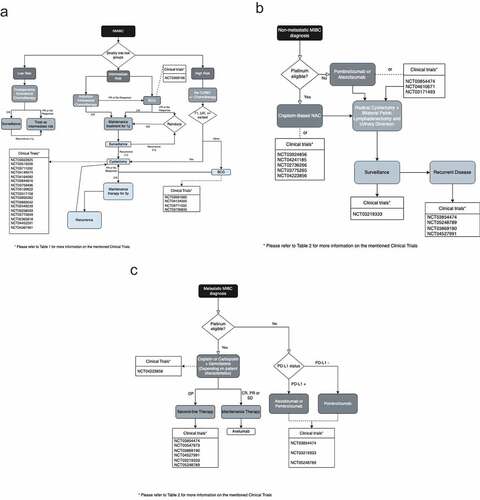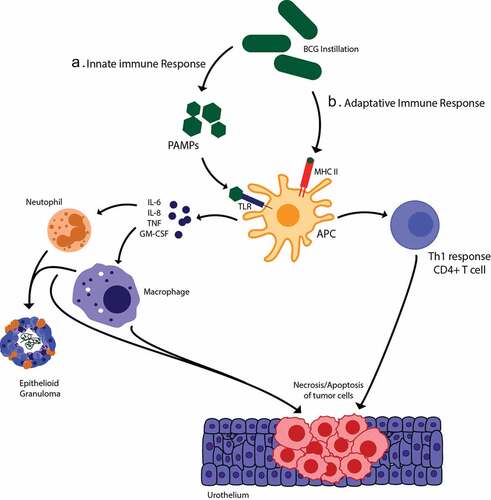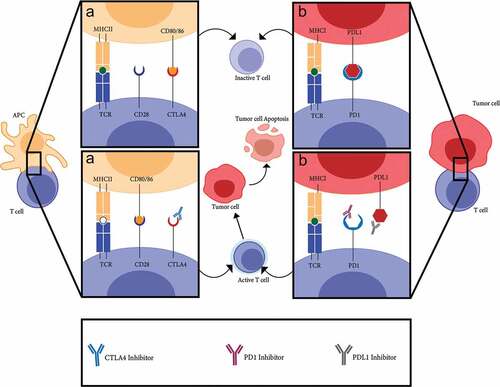Figures & data
Figure 1. Treatment algorithms for A) NMIBC, B) non-metastatic muscle-invasive BC and C) metastatic MIBC.

Figure 2. Intravesical BCG instillation mechanism of action. As per current knowledge, BCG induces an antitumor immune response via two pathways. (a) After instillation into the bladder, PAMPs on BCG are recognized by different pattern recognition receptors (e.G., Toll-like receptors (TLR)) leading to the activation of the innate immune system, which results in the production of various cytokines and recruitment of neutrophils and macrophages. (b) BCG also induces an adaptive immune response by activating Th1 CD4+ T cells. Both of these pathways culminate in increased necrosis/apoptosis of tumor cells. PAMP: Pathogen-Associated Molecular Pattern; MHC II: Major Histocompatibility Complex class II; TLR: Toll-like receptor; GM-CSF: Granulocyte-macrophage colony-stimulating factor; APC: Antigen-presenting cells.

Figure 3. Mechanism of action of different Checkpoint inhibitors. (a) CTLA4 inhibitors further T cell activation by disrupting the CTLA4/CD80/86 interaction between APCs and T cells. (b) PD1 and PDL1 inhibitors also promote an active T cell population by disrupting the PD-1/PDL1 interaction between T cells and tumor cells. APC: Antigen-presenting cells; MHCI/II: Major Histocompatibility Complex; TCR: T cell Receptor.

Table 1. Summary of the mentioned clinical trials on NMIBC.
Table 2. Summary of the mentioned clinical trials on MIBC.
